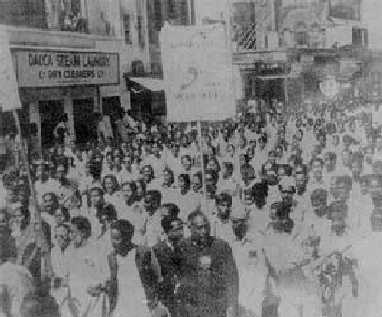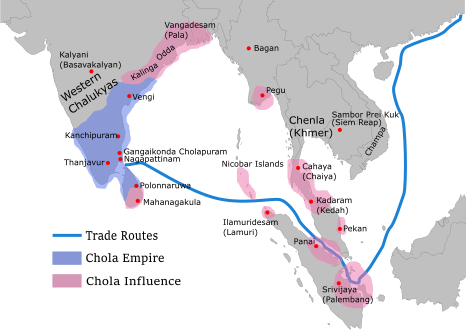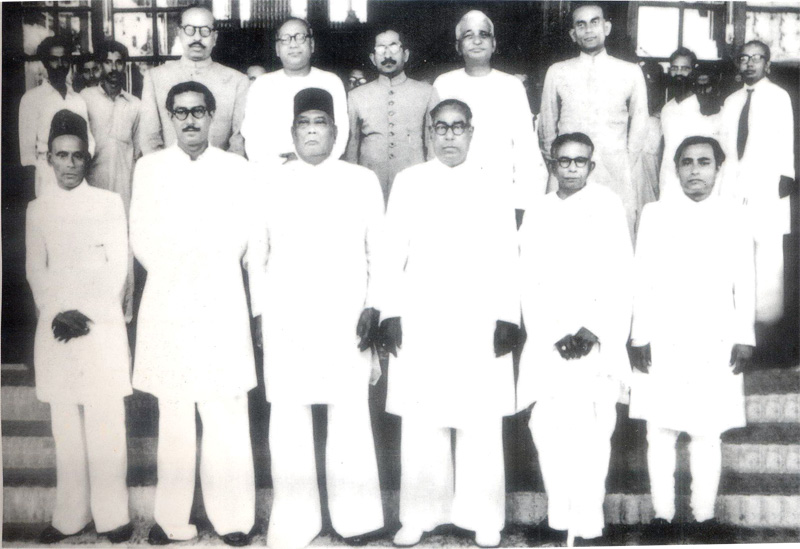|
International Mother Language Day
International Mother Language Day is a worldwide annual observance held on 21 February to promote awareness of linguistic and cultural diversity and to promote multilingualism. First announced by UNESCO on 17 November 1999, it was formally recognized by the United Nations General Assembly with the adoption of UN resolution 56/262 in 2002. Mother Language Day is part of a broader initiative "to promote the preservation and protection of all languages used by people of the world" as adopted by the UN General Assembly on 16 May 2007 in UN resolution 61/266, which also established 2008 as the International Year of Languages. The idea to celebrate International Mother Language Day was the initiative of Bangladesh. In Bangladesh, is the anniversary of the day when the Bengalis of the then-Pakistani province of East Bengal (which is now the independent state of Bangladesh) fought for recognition of their Bengali language as Official Central State Languages instead of Provincial Langu ... [...More Info...] [...Related Items...] OR: [Wikipedia] [Google] [Baidu] |
Shaheed Minar, Dhaka
The Shaheed Minar ( Romanisation of Bengali, romanised: 'Shohid Minar' ) is a national monument in Dhaka, Bangladesh, established to memorialization, commemorate those killed during the Bengali Language Movement demonstrations of 1952 in then East Pakistan. On 21 and 22 February 1952, students from Dhaka University and Dhaka Medical College and political activists were killed when the Pakistani police force opened fire on Bengali protesters who were demanding official status for their native tongue, Bengali language, Bengali. The massacre occurred near Dhaka Medical College and Ramna Park in Dhaka. A makeshift monument was erected on 23 February by students of Dhaka Medical College and Hospital, Dhaka Medical College and other educational institutions, but soon demolished on 26 February by the Pakistani police force. The Language Movement gained momentum, and after a long struggle, Bengali gained official status in Pakistan (with Urdu) in 1956. To commemorate the dead, the Shah ... [...More Info...] [...Related Items...] OR: [Wikipedia] [Google] [Baidu] |
Andaman And Nicobar Islands
The Andaman and Nicobar Islands is a union territory of India comprising 572 islands, of which only 38 are inhabited. The islands are grouped into two main clusters: the northern Andaman Islands and the southern Nicobar Islands, separated by a wide Ten Degree Channel, channel. The capital and largest city of the territory, Port Blair (officially Sri Vijaya Puram), is located approximately from Chennai and from Kolkata in mainland India. The islands are situated between the Bay of Bengal to the west and the Andaman Sea to the east. The northernmost point is from the mouth of the Hooghly River. Indira Point, located at 6°45'10″N and 93°49'36″E on the southern tip of Great Nicobar, is the southernmost point of India. The territory shares maritime borders with Indonesia located about to the south, Myanmar located to the north-east and Thailand located to the south-east. The islands occupy a total land area of approximately with a population of 380,581 as per the 2011 ... [...More Info...] [...Related Items...] OR: [Wikipedia] [Google] [Baidu] |
Abdul Jabbar (activist)
Abdul Jabbar (11 October 1919 – 21 February 1952) was a protester who was killed during the Bengali language movement in 1952 that took place in the erstwhile East Pakistan (currently Bangladesh). He is considered a martyr in Bangladesh. Background Abdul Jabbar was born on 11 October 1919 in Pachua under the Gaffargaon, Mymensingh, East Bengal, British Raj. Although he received his primary education in the local educational institution called pathsala (Dhopaghat Krishtobazar Primary School), he failed to continue his education owing to poverty. Career Abdul Jabbar worked with his father farming in his village. He decided to travel to the river port town of Narayanganj by train. He got a job in Burma through an Englishman he met in Narayanganj. He worked there for 12 years before going back to Burma. He was recruited in the British Indian Navy during World War Two but was discharged after being injured during training. He was then working as a tailor. He came to Dhaka, East P ... [...More Info...] [...Related Items...] OR: [Wikipedia] [Google] [Baidu] |
Rafiq Uddin Ahmed
Rafiq Uddin Ahmed () (30 October 1926 – 21 February 1952) was a protester killed during the Bengali Language Movement that took place in East Pakistan (currently Bangladesh) in 1952. He is considered a martyr in Bangladesh. Early life Ahmed was born October 30, 1926, in Paril village (renamed 'Rafiqnagar'), Singair, Manikganj District, East Bengal, British Raj. His father's name was Abdul Latif and mother's name was Rafiza Khatun. Rafiq was the eldest son of the couple's five sons and two daughters. Rafiq's grandfather is Mohammad Makhim. He passed his matriculation from Baira School in 1949. He studied Intermediate level from Debendra College but dropped out before finishing. He moved to Dhaka and started working in a printing press owned by his father. In Dhaka, he was admitted to the Department of Accounting Science at the then Jagannath College. Bengali Language Movement Ahmed was active in the student protest demanding Bengali be made the national language of Paki ... [...More Info...] [...Related Items...] OR: [Wikipedia] [Google] [Baidu] |
Abul Barkat
Abul Barkat (; 16 June 1927 – 21 February 1952) was a protester killed during the Bengali Language Movement protests which took place in the erstwhile East Pakistan (currently Bangladesh), in 1952. He is considered a martyr in Bangladesh. Early life Abul Barkat was born on June 13 or 16, 1927 in Babla village, Salar, Murshidabad, Salar that time Bharatpur I, Bharatpur Block, Murshidabad, West Bengal, British Raj. He studied in Babla primary school and completed his matriculation from Talibpur High School in 1945 and completed his intermediate from Krishnath College in 1947. He moved to Dhaka in 1948 after the Partition of India. He completed his BA in political science from University of Dacca in 1951. He started his MA in political science in Dhaka University. Bengali Language Movement On February 21, 1952, students bought out a protest demanding Bengali language be given the status of national language despite Unlawful assembly, Section 144 (curfew) being imposed. The poli ... [...More Info...] [...Related Items...] OR: [Wikipedia] [Google] [Baidu] |
Abdus Salam (activist)
Abdus Salam (27 November 1925 — 7 April 1952) was a demonstrator who died during the Bengali Language Movement demonstrations which took place in the erstwhile East Bengal (currently Bangladesh), Pakistan in 1952. He is considered a martyr in Bangladesh. Early life Abdus Salam was born on 27 November 1925 in Laxmanpur (renamed 'Salam Nagar'), Matubhuiyan, Daganbhuiyan, Feni, East Bengal, British Raj. He studied in Krishnarampur Primary School, then at Matubhuiyan Kalimullah Minor School. He then joined the Daganbhuiyan Kemal Atatürk High School but dropped out at class 10 because of financial constraints. Career Abdus Salam went to Kolkata where he stayed with his cousin and her husband who worked in the Port of Kolkata. Abdus Salam was able to get a job in the port. In 1947 he moved to Dhaka and got a job at the department of industries as cleric record keeper. He received a place to stay in the government housing Palasi Barrack at Azimpur. Bengali language movement ... [...More Info...] [...Related Items...] OR: [Wikipedia] [Google] [Baidu] |
University Of Dhaka
The University of Dhaka (), also known as Dhaka University (DU), is a public university, public research university located in Dhaka, Bangladesh. Established in 1921, it is the oldest active university in the country. The University of Dhaka was founded in 1921 under the Dacca University Act 1920 of the Indian Legislative Council. The establishment of the university in Dhaka was initiated with 600 acres of land requisitioned by the British government in 1905 after a new province of East Bengal and Assam was formed with Dhaka as its capital. Part of the land requisitioned belonged to the estate of Khwaja Salimullah, Nawab Bahadur Sir Khwaja Salimullah. It is modeled after British Universities, British universities. Currently it is the largest public university, public research university in Bangladesh, with a student body of 46,150 and a faculty of 1,992. It has made significant contributions to the modern history of Bangladesh. After the Partition of India, it became the focal ... [...More Info...] [...Related Items...] OR: [Wikipedia] [Google] [Baidu] |
Dhirendranath Datta
Dhirendranath Datta (2 November 1886 – disappeared 29 March 1971) was a Bengali lawyer and politician from East Bengal who was a member of the 1st Constituent Assembly of Pakistan. He is best known for proposing Bengali for the national language of Pakistan in the Assembly. He was also active in the politics of undivided Bengal in pre-partition India. Early life Datta was born in an Aristocrat Kayastha Family on 2 November 1886 in Ramrail Union, in Brahmanbaria District, Bengal Province (in today's Bangladesh). His father Jagabandhu Datta was a mukhtiyer (lower ranked pleader) who introduced Dhirendranath to the legal profession from an early age. Dhirendranath completed matriculation from Comilla Zilla School and intermediate from Ripon College in Calcutta. Later he completed his graduation and obtained law degree from Calcutta University. Early career Datta began his career as a school teacher after passing intermediate, he eventually became assistant headmaster of ... [...More Info...] [...Related Items...] OR: [Wikipedia] [Google] [Baidu] |
Urdu
Urdu (; , , ) is an Indo-Aryan languages, Indo-Aryan language spoken chiefly in South Asia. It is the Languages of Pakistan, national language and ''lingua franca'' of Pakistan. In India, it is an Eighth Schedule to the Constitution of India, Eighth Schedule language, the status and cultural heritage of which are recognised by the Constitution of India. Quote: "The Eighth Schedule recognizes India's national languages as including the major regional languages as well as others, such as Sanskrit and Urdu, which contribute to India's cultural heritage. ... The original list of fourteen languages in the Eighth Schedule at the time of the adoption of the Constitution in 1949 has now grown to twenty-two." Quote: "As Mahapatra says: "It is generally believed that the significance for the Eighth Schedule lies in providing a list of languages from which Hindi is directed to draw the appropriate forms, style and expressions for its enrichment" ... Being recognized in the Constitution, ... [...More Info...] [...Related Items...] OR: [Wikipedia] [Google] [Baidu] |
Pakistan
Pakistan, officially the Islamic Republic of Pakistan, is a country in South Asia. It is the List of countries and dependencies by population, fifth-most populous country, with a population of over 241.5 million, having the Islam by country#Countries, second-largest Muslim population as of 2023. Islamabad is the nation's capital, while Karachi is List of cities in Pakistan by population, its largest city and financial centre. Pakistan is the List of countries and dependencies by area, 33rd-largest country by area. Bounded by the Arabian Sea on the south, the Gulf of Oman on the southwest, and the Sir Creek on the southeast, it shares land borders with India to the east; Afghanistan to the west; Iran to the southwest; and China to the northeast. It shares a maritime border with Oman in the Gulf of Oman, and is separated from Tajikistan in the northwest by Afghanistan's narrow Wakhan Corridor. Pakistan is the site of History of Pakistan, several ancient cultures, including the ... [...More Info...] [...Related Items...] OR: [Wikipedia] [Google] [Baidu] |
West Pakistan
West Pakistan was the western province of Pakistan between One Unit, 1955 and Legal Framework Order, 1970, 1970, covering the territory of present-day Pakistan. Its land borders were with Afghanistan, India and Iran, with a maritime border with Oman in the Gulf of Oman in the Arabian Sea. Following its independence from British Raj, British rule, the new Dominion of Pakistan was physically separated into two exclaves, with the western and eastern wings geographically separated from each other by Dominion of India, India. The western wing of Pakistan comprised three Governor#British Empire and Commonwealth Realm, governor's provinces (the North-West Frontier Province, North-West Frontier, West Punjab and Sind Province (1936–55), Sind), one Chief commissioner#Colonial, chief commissioner's province (Baluchistan (Chief Commissioner's Province), Baluchistan) along with the Baluchistan States Union, several Princely states of Pakistan, independent princely states (notably Bahawalp ... [...More Info...] [...Related Items...] OR: [Wikipedia] [Google] [Baidu] |
East Pakistan
East Pakistan was the eastern province of Pakistan between 1955 and 1971, restructured and renamed from the province of East Bengal and covering the territory of the modern country of Bangladesh. Its land borders were with India and Burma, with a coastline on the Bay of Bengal. East Pakistanis were popularly known as "Pakistani Bengalis"; to distinguish this region from India's state West Bengal (which is also known as "Indian Bengal"), East Pakistan was known as "Pakistani Bengal". In 1971, East Pakistan became the newly independent state Bangladesh, which means "country of Bengal" or "country of Bengalis" in Bengali language. East Pakistan was formed with West Pakistan at the reorganization of One Unit Scheme orchestrated by 3rd prime minister of Pakistan, Mohammad Ali of Bogra, Mohammad Ali. The Constitution of Pakistan of 1956 replaced the Pakistani monarchy with an Islamic republic. Bengali politician H.S. Suhrawardy served as the Prime Minister of Pakistan between 1956 an ... [...More Info...] [...Related Items...] OR: [Wikipedia] [Google] [Baidu] |







